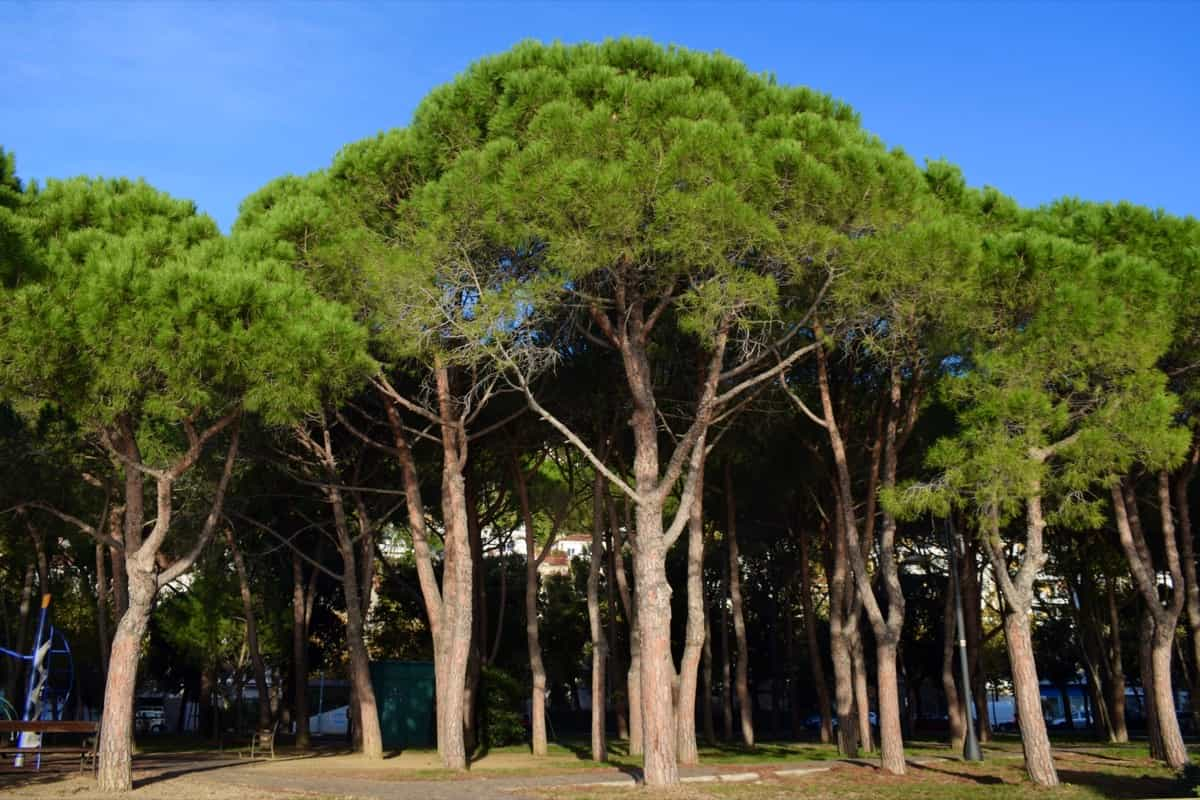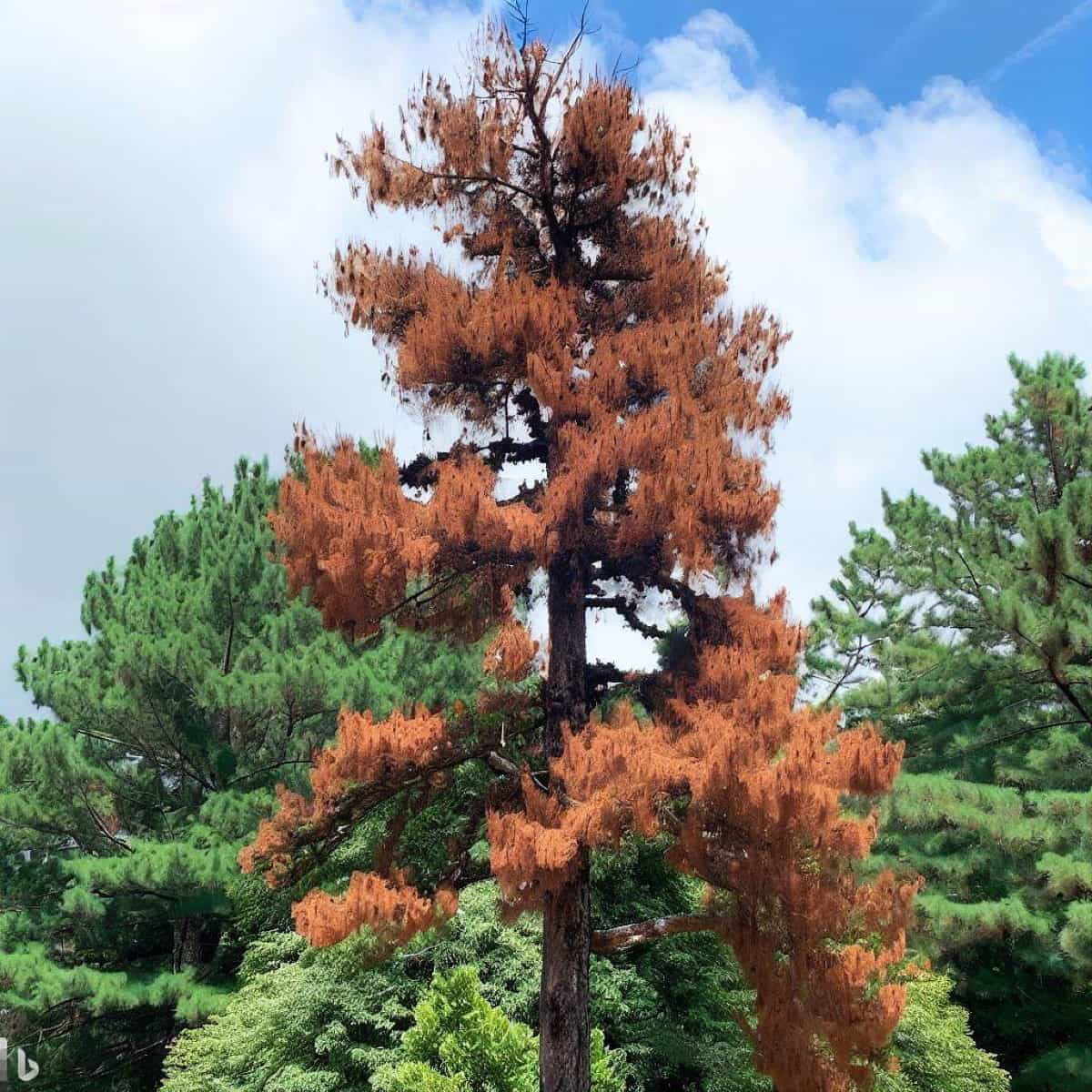Pine wilt is a deadly disease affecting many pine trees in the Southern Plains, with grave consequences for local biodiversity and landscapes. Both professionals and homeowners alike must understand pine wilt disease symptoms, how to diagnose it, and most importantly, how to stop it. With the right management strategies and effective pine wilt treatment, we can combat this lethal disease’s spread.

How to Identify and Treat Pine Wilt in Southern Plains
Signs and Symptoms of Pine Wilt in Southern Plains
Recognizing the signs and symptoms of pine wilt is a critical first step toward curbing its devastating effects. The disease, caused by tiny microscopic worms known as nematodes, rapidly disrupts the normal functioning of the tree’s vascular system. Infected trees initially display wilted, grey-green needles that quickly turn brown.
This symptom, often mistaken for drought stress, usually starts at the top of the tree and progressively affects the lower branches. The browning of needles is typically accompanied by reduced resin production, causing the branches to become brittle. Moreover, diseased trees may die within a few weeks to months after initial infection, a faster rate than most tree diseases.
How to Diagnose Pine Wilt in Southern Plains
Diagnosing pine wilt involves closely examining the symptoms and a few laboratory tests. It is important to remember that early detection can greatly enhance the effectiveness of any pine wilt treatment. When needles turn brown, and branches become brittle, it may already be a late stage of the disease.
In addition to these physical signs, blue-stain fungi, often associated with nematode infestations, can also point toward pine wilt. These fungi discolor the wood beneath the bark into a bluish-grey hue. However, the definitive diagnosis is often through microscopic examination to detect the presence of the nematodes in the wood.
Effective Treatments for Pine Wilt in Southern Plains
Treatment of pine wilt is challenging, and prevention is often the best cure. Nevertheless, some methods have proven effective in managing the disease. One such method involves injecting the tree with specialized chemicals to kill the nematodes. This, however, requires professional assistance due to the hazardous nature of the chemicals. Moreover, it is essential to eliminate and dispose of infected trees properly to halt nematode transmission to healthy ones. Disposing of the trees by burning or deep burial is crucial to eliminate nematodes.
Preventing Pine Wilt Spread in Southern Plains
Understanding how to stop pine wilt disease spread is crucial. Prevention begins with proper sanitation practices in your yard or woodland area. Keeping the area clean and free from deadwood could serve as a breeding ground for nematodes. If a tree dies from pine wilt, it should be cut down and destroyed before the next pine sawyer beetle season (the beetle that carries the nematodes) to prevent the spread to healthy trees. In addition, using resistant tree species for new plantings can be a practical long-term strategy.
Management Strategies for Pine Wilt in Southern Plains
Proper management of pine wilt entails both preventive and reactive measures. Preventive strategies include regular inspection of pines for early detection of symptoms and prompt treatment. On the other hand, reactive measures involve applying chemical treatments and removing and destroying infected trees. All these strategies must be employed in a coordinated manner to manage the disease effectively.
Identifying Nematodes Causing Pine Wilt in Southern Plains
Identifying the specific nematodes causing pine wilt is vital in managing the disease. These nematodes are microscopic and reside in the resin canals of the pine trees. They cause damage by feeding on the cells and releasing toxins that block the water-conducting tissue, leading to wilt. Identification requires professional expertise and specialized microscopic equipment. It’s important to note that not all nematodes are harmful; some even help in soil fertility.
In case you missed it: How to Treat Brown Spots on Fruit Trees Naturally: Causes, Fix with Organic Home Remedies

Best Practices for Controlling Pine Wilt in Southern Plains
To control pine wilt, vigilance is key. Regularly monitoring and detecting symptoms early can control the disease’s spread. Chemical treatment, while effective, should be used as a last resort due to its potential environmental impact. Instead, biological control methods may be explored, such as using beneficial nematodes that prey on harmful ones. Quarantine measures should also be imposed in areas with a high disease prevalence to contain its spread.
Natural Remedies for Treating Pine Wilt in Southern Plains
Natural remedies for treating pine wilt include using beneficial nematodes and fungi that attack the disease-causing nematodes. Another strategy is enhancing the overall health of the trees through proper nutrition and watering practices. Healthy trees are more resistant to diseases and can withstand nematode attacks better. Using organic matter to improve soil fertility can also boost tree health, thus acting as a natural barrier against pine wilt.
Pine Wilt-resistant Tree Species for Southern Plains
Planting pine wilt-resistant tree species is a crucial preventive measure against the disease. Some varieties, like the Austrian Pine and Ponderosa Pine, have resisted pine wilt and can be suitable for new plantings. These species not only help prevent the spread of the disease but also preserve the aesthetics and ecological balance of the Southern Plains.
Expert Advice on Dealing With Pine Wilt in Southern Plains
Dealing with pine wilt can be overwhelming; seeking expert advice is paramount. Local extension services, forest pathologists, and arborists can provide valuable insights into managing and controlling the disease. Their knowledge of regional specifics can benefit the effective and sustainable management of pine wilt.
They can guide homeowners in selecting resistant tree species, appropriate chemical treatments, and proper tree disposal methods. Their expertise will ensure that the right steps are taken to protect the valuable pine resources of the Southern Plains from this devastating disease.
Integrating Pine Wilt Management Techniques in Southern Plains
The battle against pine wilt disease requires a multi-faceted approach. Combining strategies like early detection, using resistant tree species, applying natural remedies, and implementing effective treatment and control methods can yield the best results. It’s equally important to involve local communities in managing the disease.
Community-wide awareness programs can equip individuals with the knowledge to detect the early signs of pine wilt and take the necessary actions. Furthermore, policies enforcing proper tree disposal and restricting potentially infected wood transport can help contain the disease.
In case you missed it: Breathe Fresh: Discover the 8 Best Air Purifying Bonsai Plants/Trees

Conclusion
Pine wilt is a lethal disease that significantly threatens pine trees in the Southern Plains. However, with a detailed understanding of the disease, its symptoms, and the nematodes causing it, coupled with comprehensive management strategies, its spread can be effectively contained.
It requires a collective effort, including professional expertise, community involvement, and adherence to preventive measures and treatment methods. By implementing these strategies, we can ensure the preservation and sustainability of our valuable pine landscapes in the Southern Plains, maintaining their significant ecological and aesthetic contribution to our environment.
- Feed Your Flock for Less: Top 10 Tips to Save on Chicken Feed
- Ultimate Guide to Ossabaw Island Hog: Breeding, Raising, Diet, and Care
- Hatching Answers: The Top 10 Reasons Your Chickens Aren’t Laying Eggs
- Eggs and Economics: Breaking Down the Cost of Raising Backyard Chickens
- Defend Your Greens: Proven Methods to Keep Iguanas Out of Your Garden
- Ultimate Guide to Cinnamon Queen Chicken: A Comprehensive Guide for Beginners
- Ultimate Guide to California Tan Chicken: Breeding, Raising, Diet, Egg-Production and Care
- Ultimate Guide to Marsh Daisy Chicken: Breeding, Raising, Diet, and Care
- 10 Types of Chicken Farming Businesses You Can Start for Profits